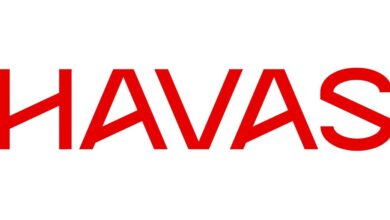The five-stage journey organizations take to achieve AI maturity

Transform 2024 returns this July! Over 400 enterprise leaders will gather in San Francisco from July 9-11 to dive into the advancement of GenAI strategies and engaging in thought-provoking discussions within the community. Find out how you can attend here.
There’s practically a new study examining artificial intelligence’s impact on the workplace every week. Microsoft and LinkedIn released their annual Work Trend Index last month, concluding workers are embracing AI while employers remain largely paralyzed by indecision. Now, Asana and Anthropic have teamed up on this year’s State of AI at Work study.
The findings
More than 5,000 U.S. and U.K. knowledge workers and consulted AI experts were polled in March 2024 in order to get a comprehensive assessment of AI adoption in the workplace. The results are tailored to decision-making executives looking to improve their AI strategies and discover how to use the technology to boost their company’s productivity and collaboration. Asana outlines three key findings:
- The percentage of knowledge workers using AI weekly has increased by 44 percent over the past nine months to 52 percent
- Despite impressive adoption growth, only 7 percent of employees report their companies have mature AI implementations, characterized by successful integration of multiple AI tools into work processes and regular evaluation of their impact
- 82 percent of workers say their organizations have yet to provide training on the use of generative AI
These statistics may not necessarily be surprising, as other studies have concluded similar findings. But these are likely to set the mood for the thing that really separates this State of AI at Work from all the rest.
“What sets this study apart from others is its focus on organizational AI maturity and the actionable insights it provides for organizations to advance their AI implementation,” Dr. Rebecca Hinds, Asana’s head of its Work Innovation Lab, explains to VentureBeat in an email. “The report is the first to classify organizations according to a five-stage AI maturity model, from immature (Stage 1) to mature (Stage 5) implementations. The study also outlines the steps organizations need to take to achieve mature AI implementations, known as the ‘5Cs’: Comprehension, Concerns, Collaboration, Context, and Calibration.”
Transform 2024 Registration is Open
Join enterprise leaders in San Francisco from July 9 to 11 for an exclusive AI event. Connect with peers, explore the opportunities and challenges of Generative AI, and learn how to integrate AI applications into your industry. Register Now
“For instance, in the context of the Collaboration ‘C’ (how humans collaborate with AI), we find that employees at mature AI organizations are 1.5 times more likely to view AI as a teammate. This shift in perspective leads to increased AI usage, enthusiasm, and productivity gains. Regarding the Context ‘C,’ organizations with mature AI implementations are more likely to have AI policies and guidelines in place, providing a clear context for AI usage. Related to the Calibration ‘C,’ while only 17 percent of employees at Stage 1 companies report that their organizations collect feedback on AI usage, this jumps to 91 percent at Stage 5 companies, highlighting the importance of calibration in mature AI implementations,” she goes on to state.
We are far from seeing most organizations fully versed in and comfortable with AI as part of their company strategy. However, Asana and Anthropic have outlined five stages of AI maturity; a guide executives can use to gauge where their company stands in implementing real transformative outcomes. Many respondents say they’re in either the first or second stage. Only seven percent claim they’ve achieved the highest stage. Unfortunately, the report doesn’t list which companies fall into which stage. But what are the characteristics of each stage of maturity?
Five-stage journey to AI maturity

Stage 1: AI Skepticism
Organizations recognize AI’s potential and start exploring its applications. It’s about opening up to AI’s possibilities.
Stage 2: AI Activation
Companies will launch pilot projects to test the waters and gain hands-on experience with AI. Small-scale experiments will be conducted to understand the technologies’ impact and value.
Stage 3: AI Experimentation
Larger AI initiatives will be launched, and executives will start addressing the challenges of integrating the technology system-wide.
Stage 4: AI Scaling
AI is a part of an organization’s operations, reshaping workflows and decision-making processes. It’s part of the company’s DNA and operational strategy.
Stage 5: AI Maturity
Organizations are able to skillfully leverage AI to drive transformative results. Executives have found a way to strategically align the technology with their organizational goals.
What’s the secret to having a company in this final stage? Asana and Anthropic conclude that boosting comprehension is important, offering resources, training programs and support structures for knowledge workers to improve their education. Companies must also prioritize AI safety and reliability, meaning that AI vendors should be selected with “complete, integrated data models and invest in high-quality data pipelines and robust governance practices.” AI responses must be interpretable to facilitate decision-making and should always be controlled and directed by human operators.
Other elements of organizations in Stage 5 include embracing a human-centered approach, developing strong comprehensive policies and principles to navigate AI adoption responsibly, and being able to measure AI’s impact and value (e.g., are there clear metrics tied to business objectives? Can usage be tracked? Have baselines been established to accurately measure AI’s impact?)
Advancement through the five ‘Cs’
In order to progress through from AI Skepticism to AI Maturity, Asana and Anthropic have outlined five factors that must be met before an organization can evolve.
AI Comprehension
How well do employees understand how to use AI? The study reveals that only 20 percent of workers use gen AI weekly for companies in the first stage. However, businesses in the fifth stage see such usage skyrocket to 93 percent.
AI Concerns
Do executives know what concerns are top-of-mind for workers? As companies mature, are they in tune with what’s going on with AI? At Stage 1, workers are primarily concerned about their limited understanding of how gen AI works. That changes in Stages 2 and 3 with workers being concerned about how others perceive how they use AI: Is it authentic? Are they taking shortcuts? In the final two stages, workers become interested in the ethical implications of using AI.
AI Collaboration
How do employees collaborate with AI? Do they even want to? In what way do workers view artificial intelligence in the workforce? Some might see it as a tool, while others view it as a teammate that actively contributes to work processes, decision-making and problem-solving. It could also be perceived more as a consultant, offering expert advice and specialized assistance when it comes to complex issues. In the first stage, most workers say AI is a tool, but for those in Stage 5, it becomes a teammate.
AI Context
Do organizations have AI policies, guidelines and principles in place? Stage 1 companies do not have clear policies governing AI usage, which could create potential inconsistencies in how the technology is applied and hinder innovation. However, by Stage 5, there’s a greater adoption of shared organizational AI principles, detailing ethical usage, transparency, fairness, accountability and privacy as it relates to AI deployment.
AI Calibration
The final “C” gauges how AI effectiveness and value are measured within the organization. In the first stage, 20 percent of workers report productivity gains through AI, though that figure increases significantly to 87 percent for companies in the fifth stage. The study suggests organizations engage their workforce in the evaluation process to calibrate AI effectively.

When asked why Asana and Anthropic teamed up for this study, Dr. Hinds shares that both companies are mission-driven, aiming “to help humanity through the development of advanced and trusted technology. Anthropic focuses on building safe and ethical AI systems, while Asana is dedicated to helping teams collaborate more effectively and efficiently.” However, this isn’t the first collaboration between the two, as both R&D teams have worked together on new product experiences for nearly a year.
You can find Asana and Anthropic’s 2024 State of AI at Work study here.
Source



